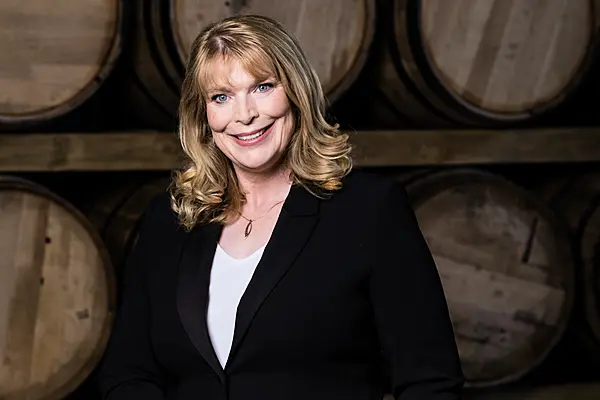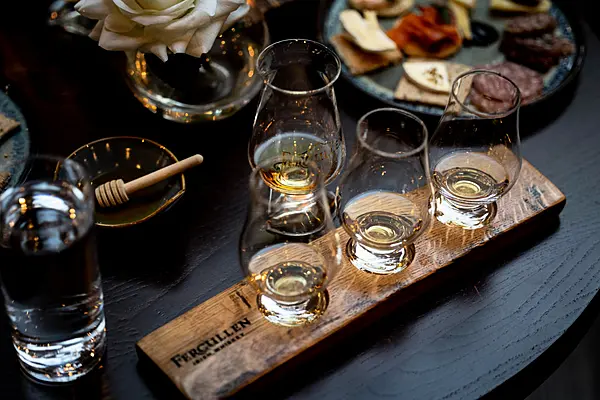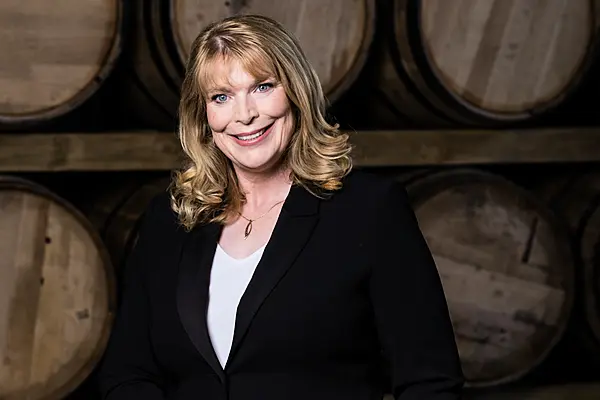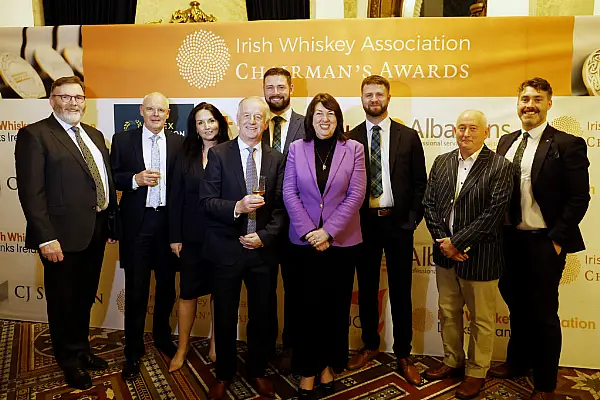James Doherty, chair of the Irish Whiskey Association, talks distillery development, whiskey tourism and industry sustainability.
This article was originally published in the Spring 2023 issue of Hospitality Ireland Magazine, in March of 2023.
James Doherty is the current chairperson of the Irish Whiskey Association, the allisland representative body working to promote, protect and represent Irish whiskey in Ireland and globally. He is also the co-founder and managing director of Sliabh Liag Distillers – in Ardara, Co. Donegal – which crowdfunded to build the Ardara Distillery, which opened its doors to visitors last summer, providing a valuable addition to Donegal’s Wild Atlantic Way. Doherty talks to Hospitality Ireland about how Irish whiskey distilleries around the island of Ireland attracted 677,000 visitors in 2022 – an increase of 425% on 2021 – and mapping the way back to the preCovid peak of 1.02 million, and beyond.
Why do you think people visit Irish whiskey distilleries?
Distilleries are magnets for different groups of people. Some come for the love of whiskey and exploring all its intricacies, some to learn and hear the founder stories or history associated with them, but I think all visitors leave understanding some of the magic of distilling, and how each distillery has both a distinct sense of place and how it contributes to and supports its community.
Is there room to develop more distilleries?
There is always room for a good, well-funded business with a clear identity. Personally, I think it’s hard to see more than 50 on the island – at this level, there’s an interesting geographic spread.
What does a good distillery experience offer?
A good distillery will weave together an engaging, welcoming experience that conveys the history of the industry and its role within the new era. It will also set out its sense of place and how this relates to the whiskeys being produced, along with helping the visitor to understand tasting and how to do it. Some distilleries also offer more hospitality, with masterclasses in cocktails and food offerings, which give the visitor an even more complete experience.

A bespoke tasting room in Powerscourt Distillery
What do Irish whiskey distilleries bring to the Irish tourism experience?
Irish whiskey distilleries showcase a unique and significant part of not just Irish, but world distilling. They bring elements of history and ally well with the resurgent food scene. They bring people that occupy hotel beds, and they form an increasingly important aspect of the experience economy. It is really encouraging to see how different tourism offerings complement each other and how distilleries contribute to that.
What supports would you like to see from the government for this aspect of the industry?
As we move on from recovery to growth in visitor numbers to whiskey distilleries, members of the Irish Whiskey Association are calling on government and agencies, North and South, to develop a new all-island food and drink tourism strategy as a priority for 2023.
The most recent food and drink tourism strategy [Food and Drink Development Strategy] was published by Fáilte Ireland in 2017, and it saw the development of initiatives such as the all-island ‘Taste the Island’ promotion in 2019. Implementation of the strategy was halted by the onset of Covid-19, and the association is calling for a new strategy to be developed as a priority.
We know that more and more international tourists are coming to Ireland, looking to experience premium offerings, including discovering the best of Irish food and drink. A new food and drink tourism strategy would provide the focus and direction for the development of what has the potential to be a high-value tourism segment by supporting Ireland’s hospitality, tourism, and food and drinks industries on an all-island basis.
It would also support the government’s ambition to promote sustainable tourism, in line with the association’s Irish Whiskey Sustainability Roadmap, published last year. It would additionally support the government’s Food Vision 2030 strategy, which commits to developing linkages between local food and tourism offerings, including support for business development and marketing initiatives to support and promote food and drink visitor attractions, including the distillery, brewery and tourism sector.
Your own career – what brought you to this point?
have been fortunate to work for some of the great drinks companies – William Grant & Sons, Foster’s and SABMiller – before my wife, Moira, and I decided that we could reclaim the distilling heritage of Donegal. We knew that our Ardara Distillery could be a catalyst for opportunity in south-west Donegal, and that we could create employment in the Sliabh Liag area that my family had to leave to look elsewhere for work in times past. We have raised €9 million to do this, and we now have a team of 28. We have created brands that celebrate Donegal, including our Silkie Irish Whiskey, which is available in 40 countries.
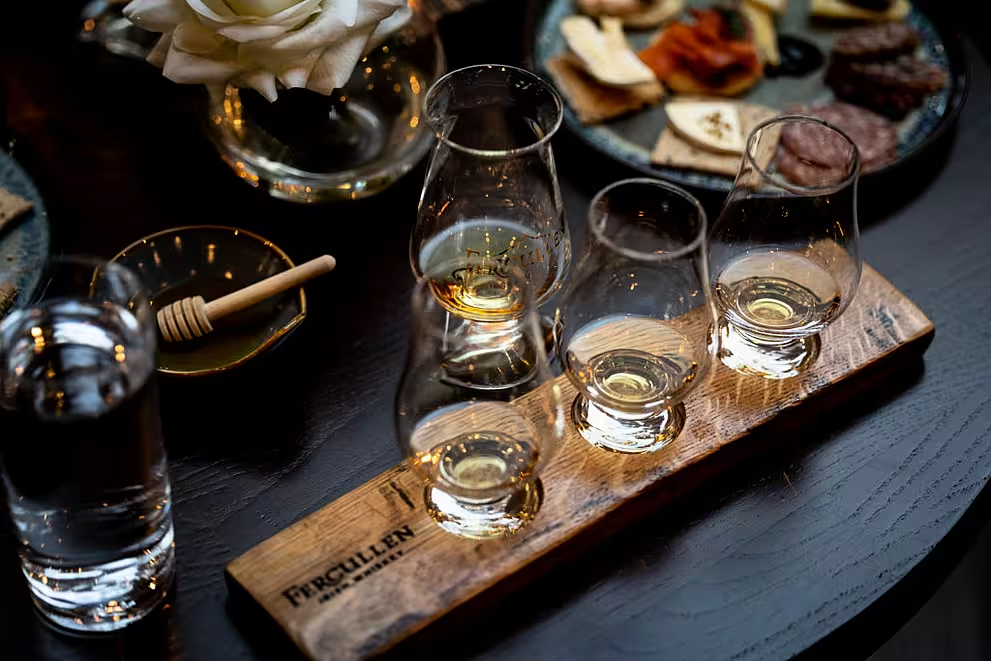
Tell us about the recent global success of Irish whiskey?
Irish whiskey has been growing consistently over the last decade and is now embracing an unprecedented depth and diversity of styles that is enhancing that growth and ‘premiumising’ the category in ways not seen before. Alongside the major markets of North America and Europe, we are seeing rapid growth in emerging markets like South Africa, Nigeria and Colombia, and greater reach in countries like Australia.
The key drivers of Irish whiskey export growth – identified in the association’s Irish Whiskey Global international trade report, published in October 2022 – include growing global demand for premium, higher-priced Irish whiskey, in line with consumers drinking less, but drinking better. Rapid market diversification, including across Africa and Asia, is further driving growth, as is the rise of e-commerce as major sales channels post-Covid, along with increased interest in Irish whiskey from the millennial and Generation Z consumer segments.
What has changed within the Irish whiskey sector to bring about the growth?
The historic strength of Irish whiskey has been the major brands – Jameson, Bushmills, Powers, Tullamore D.E.W. and Paddy – and they are still the lion’s share of the category and responsible for the bulk of the growth. The last decade has seen a rapid growth in distillers like ourselves, bonders and independent bottlers that are bringing a broader range of styles, particularly bringing back lost tastes to consumers, who we know embrace discovering newer tastes and experiences.
What are the main markets for Irish whiskey, and why?
The United States remains Irish whiskey’s largest market, accounting for over 40% of all sales. Other major markets include Germany, Poland, France, Great Britain and, of course, our home market, on the island of Ireland.
Recent years have seen strong market diversification for Irish whiskey, particularly in Africa and the AsiaPacific region, with India, Nigeria and Australia being among the fastestgrowing markets for Irish whiskey.
What further plans for the sector are there over the next two to five years?
We want to see Irish whiskey continue to achieve solid export growth, and to protect the market share gains made over the past decade. Within that, we want to see Irish whiskey competing more at the higher price points. Globally, people are drinking less, but drinking better. Irish whiskey can play into that, with our increasing supply of premium and super-premium offerings, which can, in turn, deliver greater value to our industry and to the all-island economy, but it’s not all about sales. Our Irish Whiskey Sustainability Roadmap, published last year, aspires to make Ireland home to the world’s most sustainable whiskey distilleries and brands. That’s an ambition our industry is working hard to deliver on.
Read More: Hospitality Ireland Spring 2023: Read The Latest Issue Online!

